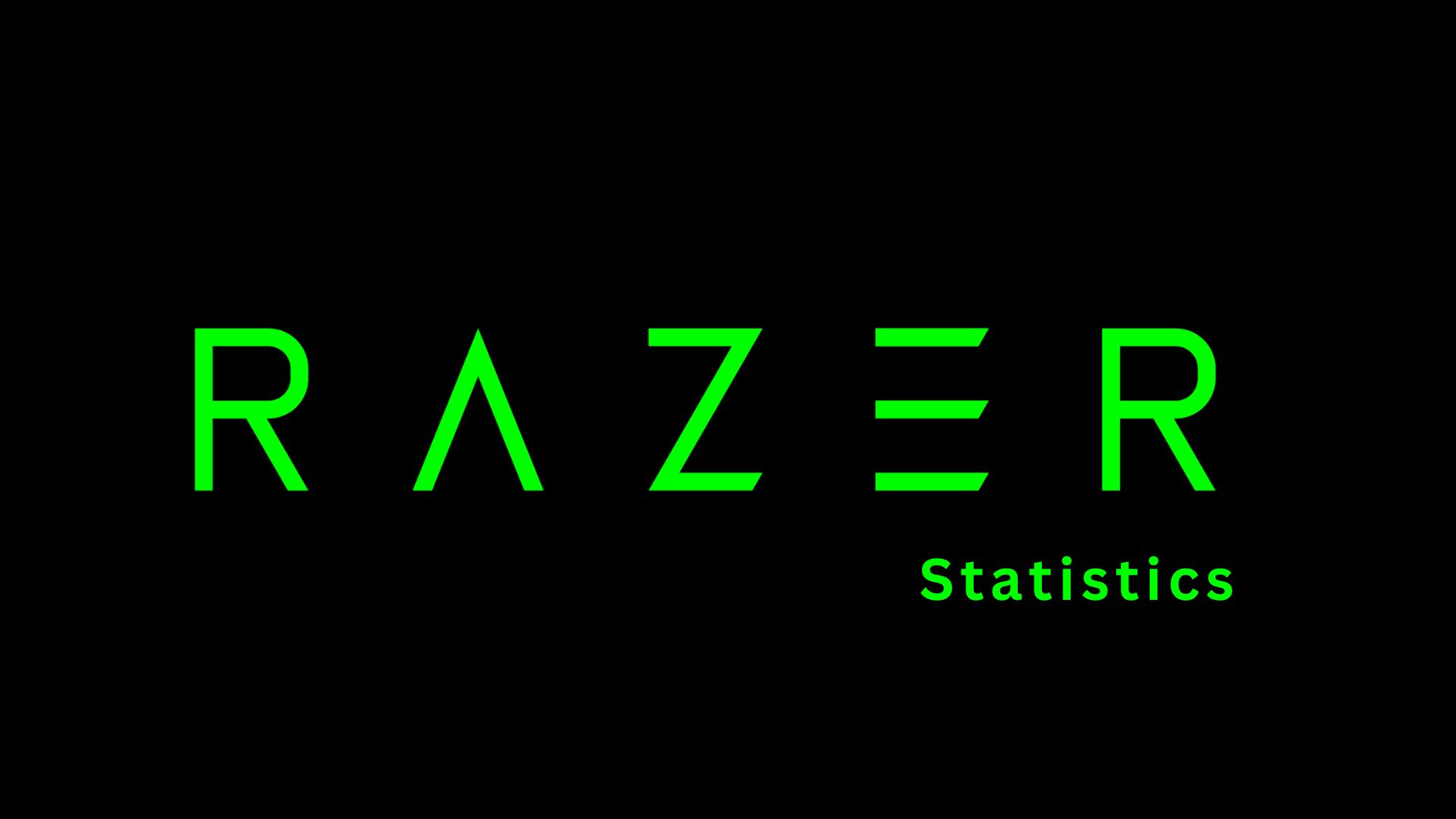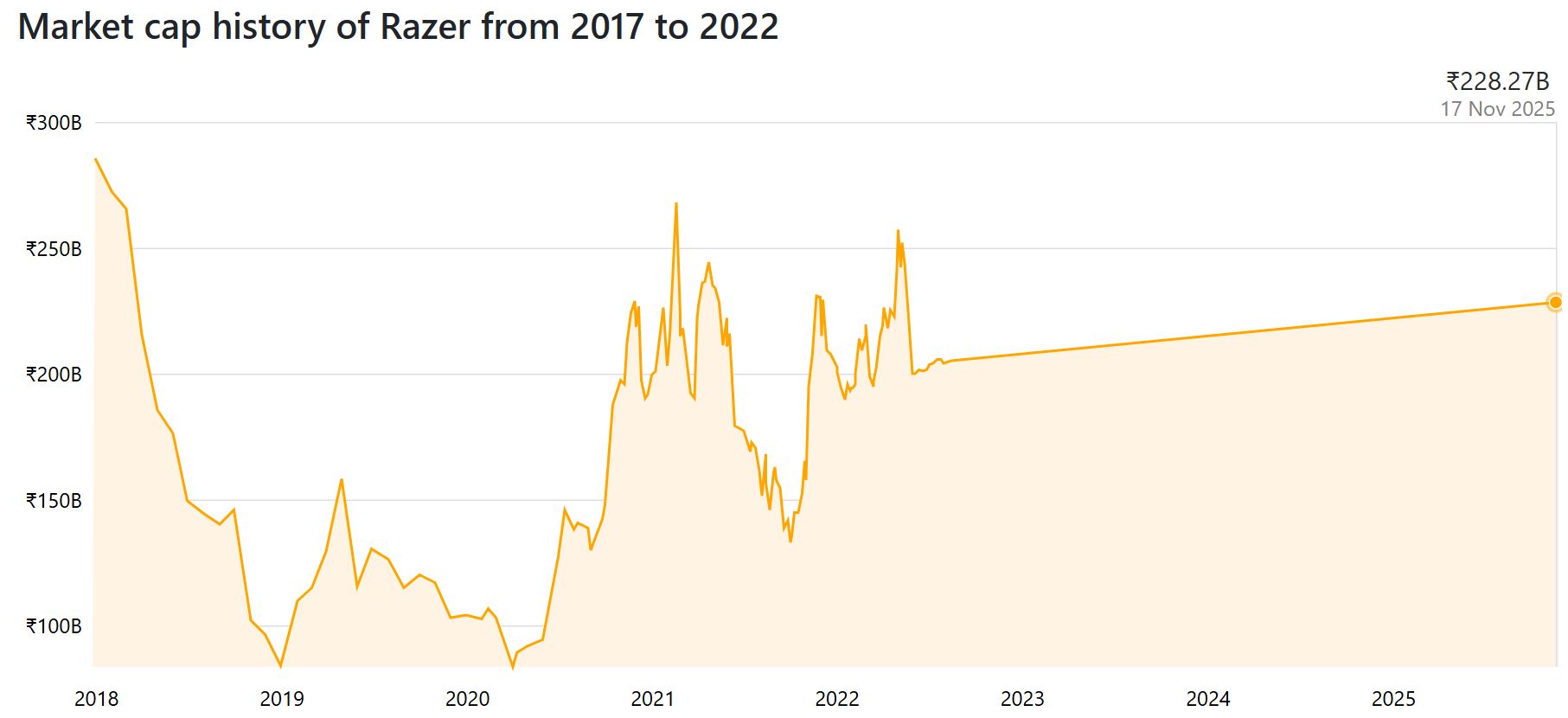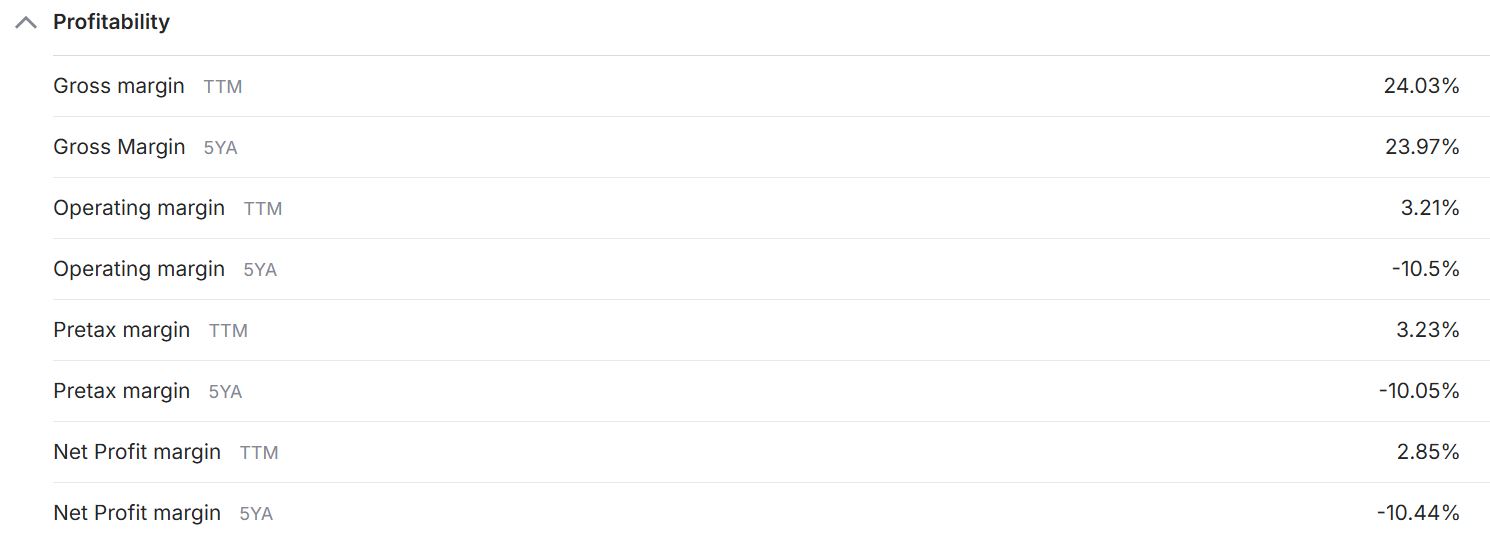Razer Statistics By Products, Streaming and Facts (2025)
Updated · Nov 19, 2025

Table of Contents
Introduction
Razer Statistics: Initially, Razer was a brand that catered to gamers and eventually turned into a global gaming company famous for its keyboards that could glow, mice molded for comfort, and gamer services. By 2025, Razer was no longer simply a hardware brand; it had evolved into a comprehensive business that not only sold peripherals but also offered software and payment services.
The following is a clear, statistics-first breakdown of the most important numbers for the year 2025. These include market capitalization, profit, market value, product mix, and patent figures.
Editor’s Choice
- Razer’s market capitalization increased rapidly to ₹228.55 billion in the year 2023 due to the gradual but vigorous recovery from the year 2020 onwards.
- A dramatic jump in 2020 of 91.77% increase in valuation.
- Razer remains the number one choice for gamers, continuing to dominate the market in peripherals, laptops, and accessories.
- Razer DeathAdder was its flagship product, and around 8% of professional FPS players were using it.
- In 2022, Razer ventured into the AI-powered laptop market with the Tensorbook.
- The FTC mandated that Razer reimburse US$1.1 million in 2024 for making deceptive mask claims.
- The company was the first to release gaming mice with HyperPolling of 8kHz and also delved into gaming chairs.
- The high valuation ratios of Razer signal to the market that investors have grand expectations, even if the current earnings and cash flow are just moderate.
- Razer’s profitability has improved drastically: The net margin is now 2.85%, while the five-year average is -10.44%.
- Razer’s presence in streaming is substantial, with 260k followers, 6.86 million views, and a high audience of 78,011.
- Razer was granted the most patents in the US (382), followed by Taiwan (242) and China (232).
- Hardware revenue increased 77% year over year to US$677.3M, with Razer leading the gaming peripherals market across the main markets.
- The software users has risen to approximately 150M, with the monthly active users increasing by over 51%.
- The revenue from services amounted to US$72.8M with a high gross margin of 41.9%.
- Razer’s patent grant rate in the US is 73.51%, demonstrating the strength of its intellectual property.
- Key patents like US9891435B2 and US10908421B2 are widely used to block competing applications.
History of Razer
- 1998: The brand “Razer” began as a subsidiary of kärna LLC in San Diego, California, created to develop a high‑end gaming mouse called the Boomslang.
- 1999: The Boomslang gaming mouse was released by kärna LLC under the Razer brand, gaining attention among PC gamers.
- 2000: kärna LLC filed for bankruptcy, putting the earlier iteration of Razer into uncertainty.
- 2005: The current Razer Inc. was founded by Min‑Liang Tan and Robert Krakoff after acquiring the rights to the Razer brand.
- 2015: Razer acquired the software assets of Ouya (an Android‑based microconsole) and integrated the technical team into its own operations.
- 2016: Razer acquired THX Ltd. (the audio/visual certification business) from Creative Technology Ltd. to strengthen its media and audio‑visual capabilities.
- 2017: In November, Razer listed on the Hong Kong Stock Exchange under the ticker “1337”.
- 2018: Razer announced plans to fully acquire the e‑payments platform MOL Global (in April) and launched the digital wallet service “Razer Pay” in Malaysia in July.
- 2019: Razer announced closure of the Razer Game Store in February and announced discontinuation of Ouya’s online services (effective June 25) in May.
- 2020: Razer launched the “Razer Health” initiative, supplying certified surgical masks to governments and healthcare organisations during the global pandemic.
- 2021: Razer opened its new Southeast Asia headquarters in Singapore on 26 October; at the same time the company announced closure of its Razer Pay e‑wallet services in Malaysia and Singapore.
- 2022: Co‑founder Robert Krakoff passed away on 26 April. Later in May, Razer delisted from the Hong Kong Stock Exchange, becoming a private company.
Fun Facts About Razer
- The company was originally created in 1998 as a subsidiary of Kärna LLC, to develop a high‑end gaming mouse called the “Boomslang”.
- In 2005, entrepreneurs Min‑Liang Tan and Robert Krakoff acquired the rights to the “Razer” brand and formally established Razer Inc. as it is known today.
- The company’s official tagline is “For Gamers. By Gamers.” which reflects its focus on the gaming community.
- The logo of Razer—a triple‑headed snake—has become one of the most recognised emblems within the global esports and gaming hardware communities.
- The company operates a dual headquarters structure: one in Singapore and one in the United States (California).
- One of its most successful products is the gaming mouse line Razer DeathAdder which, as of mid‑2024, had sold over 20 million units worldwide.
- Razer was listed on the Hong Kong Stock Exchange under the ticker code “1337”—which is a nod to gamer “leet‑speak” (1337 = “leet”).
- The company expanded beyond hardware into software and services: its suite of software tools (e.g., Razer Chroma, Razer Synapse) has over 200 million users globally.
- In response to the global Covid‑19 pandemic in 2020, the company established the “Razer Health” initiative, setting up mask production lines in Singapore and donating to healthcare organisations.
- Razer’s product naming convention often draws from predatory or venomous animals (e.g., snakes, spiders, marine creatures) for its mice, keyboards and audio devices.
- Razer has acquired other companies to extend its capabilities. For example, it acquired audio‑visual speciality company THX Ltd in 2016 and smartphone‑startup Nextbit Inc. in 2017.
- In 2018 it reported that its “Peripherals” segment revenue grew to US $429.6 million, reflecting a 26.8 % increase year‑on‑year from 2017.
webcast.irasia.com - Razer has introduced services for gamers and millennials such as digital payment tools (e.g., Razer Gold) supporting over 50,000 games globally.
- The company’s new “Razer Blade” line of laptops is described as being precision‑manufactured (CNC milled from a single block of aluminium) to optimise strength‑to‑weight ratio.
Razer Market Capitalization

(Source: companiesmarketcap.com)
- Razer’s market value varied significantly over the past few years, and the Indian Rupee (₹) was used as the currency for representation.
- On April 29, 2022, Razer’s market cap was ₹228.55 billion.
- The market cap is the total value of all a company’s shares, and it is a common practice to use it as an easy way to get an estimate of the company’s worth in the market.
- Razer’s market cap fluctuated year by year depending on the investors’ interest, performance, and market situation.
- The market capitalisation in 2018 was ₹84.04 billion, representing a steep 70.45% decline, indicating that the company had lost a significant portion of its market value that year.
- In 2019, the market capitalization reclaimed to ₹103.84 billion, with a growth of 23.56%.
- The upward trend continued in 2020, during which the company surged to ₹199.14 billion — a staggering 91.77% increase, which can be attributed to either strong investor confidence or significant business momentum at the time.
- After 2020, the growth rate declined. For 2021, the market cap had a tiny rise to ₹202.33 billion, with a 1.6% increase only.
- It furthered its uptrend in 2022, reaching ₹213.14 billion—a 5.34% rise.
- By 2023, the figure of ₹228.55 billion was reached, indicating that, notwithstanding the ups and downs of the earlier years, Razer had progressively regained and even further strengthened its market value.
- The pattern is characterised by sharp fluctuations at the beginning, a significant recovery in 2020, and consistent but modest gains through 2021-2023.
Razer Products
- Razer is primarily aimed at gamers and supplies gaming laptops, tablets, and a wide range of PC accessories.
- The brand’s affinity for nature is also reflected in its product names, many of which are inspired by poisonous animals, including insects, snakes, fish, cats, and spiders, which has become a defining brand identity character.
- Razer DeathAdder gaming mouse is the most popular product. It has always been in demand and has been around for several years.
- Razer mice’s usage among competitive gaming is indicated by the fact that approximately 8% of professional first-person-shooter players trust them.
- The Tensorbook, a laptop destined for machine Learning engineers and optimized for Linux workflows, was jointly developed by Razer and Lambda in April 2022.
- Razer also engaged in tech experimentation with health during the COVID-19 pandemic by developing a face mask that enabled lip-reading and included LED lighting for improved visibility.
- First, it was called Project Hazel, then in October 2021, it was renamed Zephyr after being unveiled as a dream product.
- While it was advertised as N95 rated, subsequent disclosures mentioned that it didn’t conform to the official N95 standard.
- This issue led to FTC action in April 2024 and a proposed settlement requiring Razer to refund over US$1.1 million for its claims.
- Razer had also set up some new technology areas in its peripherals. HyperPolling was one of their major technological breakthroughs of 2021; an 8 kHz polling rate feature that was first introduced in the Razer Viper 8K mouse, providing super-fast reaction times for competitive gaming.
- The same year, the company took over the gaming chair market with the Razer Iskur, their first in-house design that concentrated on posture and comfort, followed by the Enki, which was targeted towards gamers who spend long hours playing.
- The year 2024 is marked by continuous innovation from Razer, which introduced a new Razer Blade laptop with Thunderbolt 5, the connection standard that is faster and more advanced than Thunderbolt 4.
- This move further consolidated the company’s position as a leader that brings high-tech features to the gaming and creator laptop segment.
Razer Valuation Ratio

(Source: investing.com)
- The given valuation ratios provide a glimpse into the market’s perception of Razer with respect to its earnings, sales, cash flow, and book value.
- The P/E ratio of 71.38 implies that investors are paying more than 71 times the company’s earnings for each share, which in turn indicates the market’s anticipation of strong future growth.
- The price-to-sales ratio of 1.94 indicates that the company is valued at nearly twice its annual revenue, which is not uncommon for a tech or gaming-oriented company with a strong brand presence.
- The price-to-cash-flow ratio of 72.39 implies that the stock is very highly priced compared to the cash generated by the company, indicating strong investor expectations but also revealing that the stock is costly on a cash flow basis.
- The price-to-free-cash-flow ratio is even steeper at 255.72, implying that the market is paying more than 255 times the free cash flow generated by the company. This is typical when the free cash flow is low or unstable, making the ratio appear excessively high.
- From the balance sheet perspective, the price-to-book ratio of 5.75 indicates that the company’s market value is more than five times the value of its net assets.
- The price-to-tangible-book ratio of 6.9 is slightly higher, which is logical as tangible book value excludes intangible assets such as brand value or patents.
Razer Profitability

(Source: investing.com)
- Razer has just released its latest profit reports, and while the company has turned previous losses into a face of a big winner, it still has thin profit margins fairly close to its side.
- The gross margin is slightly above 24%, and thus, only about 25% of the revenue is left with the company after deducting direct production costs. This level of performance is in line with the past, but no such five-year-average data for the company is available to make comparisons.
- On the other hand, the low operating margin of 3.21% indicates that the company generates a very small profit on its revenues after deducting operating costs, including marketing, R&D, and administration expenses.
- This is a drastic change compared to the company’s five-year average operating margin of – 10.5% which signifies how much the company has turned the tide from years of operational losses.
- At 3.23%, Razer’s profits before tax are very slight, but still the company’s five-year average loss is -10.05% thus again indicating recovery from considerable historical deficits.
- Razer’s net profit margin—which indicates bottom-line profitability after all taxes and expenses—stands at 2.85%, representing a notable improvement compared to the five-year average of -10.44%.
- Razer’s profit margin, although modest, has been on a positive trend, thus confirming the company’s shift from a loss to net income generation.
Razer Streaming Statistics
| Total followers | 260k |
| Hours Steamed | 982 |
| Average Viewers | 667 |
| Peak viewers | 78,011 |
| Hours Watched | 655k |
| Total views | 6.86M |
| Active days | 276 |
(Source: coolest-gadgets.com)
- The streaming statistics of Razer suggest an active and moderately popular creator presence, which occasionally receives extremely high exposure.
- The brand’s total follower count of 260,000 is a clear indication of a significant audience.
- Razer streamed for 982 hours in total across its activities, with an average of 667 viewers watching at any given time.
- Although the turnout was steady throughout, the channel experienced a significant spike at times, with 78,011 viewers being the highest number, which was likely linked to major events, product launches, or esports showcases.
- Razer’s content has totaled 655,000 hours of viewers’ watching time, which is a signal of the good engagement relative to the stream duration.
- The channel has garnered 6.86 million total views, indicating a broad reach over time.
- Razer has had 276 active streaming days and continues to be a frequent broadcaster, thereby reinforcing its presence in the gaming and technology community.
Countries In Which Razer Filed Patents
| Country | Patents |
| United States Of America | 382 |
| Taiwan | 242 |
| China | 232 |
| Australia | 225 |
| Singapore | 220 |
| Europe | 174 |
| Germany | 86 |
| United Kingdom | 75 |
| Korea (South) | 35 |
(Source: insights.greyb.com)
- The numbers indicate the number of patents Razer has filed in various countries, thus revealing the focus areas of the company’s innovation efforts.
- The US tops the list with 382 patents, thus becoming the region with the most important intellectual property protection, most likely due to its large tech market and strong patent system.
- Taiwan is next with 242 patents, which mirrors Razer’s close association with the region’s hardware manufacturing and engineering ecosystem.
- China, yet another major tech hub, accounts for 232 patents, which indicates Razer’s need to protect its designs and technologies in a highly competitive marketplace.
- Australia and Singapore are also among the countries on the patent filing list, with 225 and 220 patents, respectively. This indicates that Razer has a strong interest in these regions, which could be due to either operational or customer base presence there.
- At the regional level, Europe has 174 patents filed. The presence of Razer in the major tech markets of Europe is demonstrated by Germany and the UK, which have 86 and 75 patents, respectively.
- South Korea, another hub for gaming and electronics, has 35 patents, indicating a moderate but selective area of activity for the brand.
- All in all, the data suggests that Razer’s patent filing strategy is mainly focused on the US and Asia, while Europe and other regions get smaller but still meaningful investments.
Razer Business Performance Breakdown
- Razer’s latest performance figures indicate that the company is steadily expanding its hardware, software, and services divisions, and the picture of its growing ecosystem beyond peripherals and gaming laptops is becoming clearer.
- In the hardware category, revenue jumped by 77% as compared to the previous year, reaching US$677.3 million.
- The company remains at the top in terms of gaming peripheral sales in the US, Europe, and Asia-Pacific, which are the main regions it caters to.
- Razer is now the leader in selling premium gaming laptops in the US and is gaining increasing popularity in various parts of the world.
- The company’s rapid growth is also attributed to its expansion into new categories, including broadcasting equipment and gaming chairs, which are lifestyle products related to gaming that the brand has diversified into.
- The number of user accounts has increased by 50%, totalling around 150 million, while the monthly active user count has grown by over 51%.
- Among these, the growth in usage was mainly associated with an increase in gaming, esports, and livestreaming, which are areas where Razer’s software ecosystem (Synapse, Cortex, Chroma) plays a significant role.
- Razer’s service sector, comprising Razer Gold and Razer Fintech, generated US$72.8 million in revenue in the first half of 2021, representing a 13.8% annual growth.
- Assuming a gross margin of 41.9%, the services division was responsible for approximately 15% of the company’s overall gross profit, thereby solidifying its identification as a high-margin, recurring-revenue source within Razer’s total business.
- In combination, these results signify that Razer is not only developing as a hardware brand but also as a comprehensive ecosystem of devices, software, and financial services.
Razer Patent Impact And Filing Insights
- Razer’s patents are critical to the company’s innovation ecosystem, with many US patents being routinely used to overturn other patent applications.
- The most important is US9891435B2, which has been referenced 15 times in rejections, shortly afterwards followed by US10908421B2 with 14 citations.
- There are other patents as well, such as US20110028194A1, US10114440B2, and US9713768B2, which also have a significant impact on the technology, as they block several applications from competitors.
- This scenario highlights that Razer has a robust portfolio of basic patents in the gaming hardware and associated technologies.
- Out of 248 patent applications filed in the US, 136 were approved, which means Razer has been granted a patent approval rate of 55.2%, a metric that also indicates the quality of the patent and the likelihood of successful litigation.
- The law firms handling these patent applications were also showing different rates of performance: Razer C/O Polsinelli PC is the one with the highest number of applications filed and with an 86.73% success rate, while Mattingly & Malur PC Razer VJP achieved an impressive 95.52%.
- Such patents bolster Razer’s worldwide ecosystem that consists of gaming hardware, software platforms like Synapse and Chroma RGB, and fintech services like Razer Gold and Razer Fintech, which are all at the core of its positioning as a leading gaming lifestyle brand.
Conclusion
Razer Statistics: The 2025 profile of Razer depicts a company that has radically transformed its identity from a maker of gaming peripherals. A robust market recovery, increased profitability, and the creation of new revenue streams are indicators of a company that is developing a comprehensive ecosystem of hardware, software, and services.
In addition, Razer’s large patent portfolio, high grant rate, and influential technologies signify continuous innovation. By that measure, the company has managed to keep its brand alive through growing software users and an active streaming presence. Investor confidence remains strong, despite high valuation ratios, due to the rapid growth in hardware and services. To sum up, Razer’s development has given it a diversified global gaming and lifestyle leader status, with momentum in business segments.
FAQ.
Razer’s market capitalization has shown significant fluctuations, with a major surge in 2020 when its value grew by 91.77% to ₹199.14 billion. After this jump, growth stabilized, rising slowly through 2021–2023 and reaching ₹228.55 billion. These trends reflect shifting investor confidence influenced by product momentum, expanding business segments, and market conditions.
Razer is known for high-performance gaming peripherals and laptops, with the Razer DeathAdder being its most successful product. Beyond gaming hardware, Razer expanded into machine-learning laptops (Tensorbook), health-tech experiments (Zephyr mask), and ergonomic furniture like the Iskur and Enki chairs. Advanced technologies such as HyperPolling 8 kHz mice and Thunderbolt 5 laptops show its ongoing push for cutting-edge innovation.
Having undergone significant transformations, Razer’s profitability is definitely on the rise. The company’s net profit margin at the moment is 2.85%, which is a remarkable recovery from the five-year average of –10.44%. Operating and pretax margins reflect the same positive swings, with the figures coming from long-term negative averages to the realm of positives.
Razer is really active in the digital space with its streaming activities getting 260,000 followers and 6.86 million views all together. The company streamed for a total of 982 hours, which means that the average number of viewers per stream was 667, while the maximum number of viewers during the events reached 78,011. Razer has community engagement and brand visibility through 655,000 hours watched and 276 active streaming days.
Razer has a total of 382 US patents, which is the largest share, revealing its commitment to guarding intellectual property in primary tech markets. The company has also made significant patent applications in Taiwan and China, hence the strong connection to the manufacturing and engineering hubs. Razer’s 73.51% US grant rate can be viewed as a testament to the quality of its patent applications.

I hold an MBA in Finance and Marketing, bringing a unique blend of business acumen and creative communication skills. With experience as a content in crafting statistical and research-backed content across multiple domains, including education, technology, product reviews, and company website analytics, I specialize in producing engaging, informative, and SEO-optimized content tailored to diverse audiences. My work bridges technical accuracy with compelling storytelling, helping brands educate, inform, and connect with their target markets.










